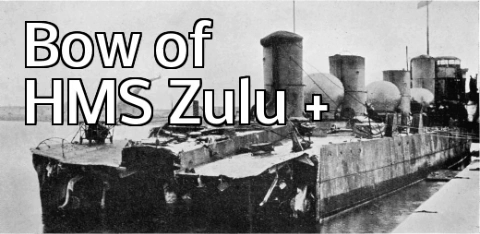The British Royal Navy is steeped in tradition and history. Its mighty fleets were the envy of the world and enabled Great Britain to run a global empire for centuries. Its ships sailed the oceans with striking names that projected qualities to inspire crews and intimidate enemies—names such as HMS Vengeance, Fearless, Vindictive, Repulse, and Spiteful. What young sailor would not be proud to serve on ships named HMS Battleaxe or Gladiator? The revolutionary HMS Dreadnought had a bold name that was so effective it was used to refer to all similar battleships that were modeled after her. Royal Navy ship names had such an air of confidence that they could be perceived as arrogant—so much so that there was actually a class of Arrogant cruisers.
However, for every HMS Warspite or Iron Duke, numerous other Royal Navy ships had names that sound decidedly less fierce. HMS Fairy, Tickler, Delight, Frolic, Dainty, and Pansy do not bear names that give the impression that they are prepared for a heated battle—though enemy sailors might wonder about what fate might befall them after engaging HMS Spanker or Cockchafer (the Spanker was named for a type of sail, while the Cockchafer was an Insect-class gunboat named for a type of beetle).
In 1998, sailors on board HMS Brave wrote a rather facetious letter to Navy News to complain that their ship was the “only frigate in the Fleet to remotely have a hard-as-nails name.” They believed that names in the Royal Navy were trending toward “the inoffensive, soft and cuddly and occasionally downright dull,” which was bad for morale. They claimed ships named after places or “fluffy animals” such as HMS Beaver, did not make a strong impression on other nations.
The U.S. Navy has certainly had its share of ship names that provoked controversy, but the disputes have often been due to politics. There was resistance to naming a carrier after Republican President Ronald Reagan until it was agreed that a carrier would be named for the Democratic Chief Executive Harry Truman. In recent years, critics charged that ships named for activists such as Caesar Chavez and Harvey Milk strayed too far from Navy tradition and were blatantly politically motivated. Many have called for a return to the guidelines that limited ship names to legacies, geographic locations, battles, and national heroes.
There is less partisan handwringing in the selection of Royal Navy ship names. Instead, the service has been free to put to sea several ships with names that could be categorized as curious, creative, or just ill-advised.
The destroyer HMS Petard had an illustrious career during World War II that included scoring a trifecta by sinking a German, an Italian, and a Japanese submarine. Quite an accomplishment for a ship named for flatulence: A petard is a small bomb that derives its name from middle French for “to break wind.” With his affinity for bawdy puns and double entendre, William Shakespeare almost certainly knew of the word’s origin when he wrote the phrase “hoist with his own petard” in Hamlet.
HMS Zubian was the product of a remarkable feat of engineering as well as a bit of creative naming. When Tribal-class destroyers HMS Zulu lost her stern and HMS Nubian lost her bow during the World War I, the good halves were welded together to form a new vessel. The names of the Zulu and Nubian were then combined, and the “Frankenship” was commissioned as the Zubian.
Two ships bore the name HMS Morris Dance. On one level, it is understandable that the Royal Navy would want to commemorate a traditional English folk dance that has a long and colorful history. On another level, the name appears a bit ridiculous when you watch namesake Morris dancers prance about while waving white handkerchiefs. It is a far cry from the fearsome haka dance performed by Maori warriors.
A couple ships have been named HMS Broke in honor of Rear Admiral Sir Phillip Broke, who captured the USS Chesapeake while commanding HMS Shannon during the War of 1812. But now the name would seem like commentary on the current state of affairs of the Royal Navy. The size of the fleet has dwindled so sharply in the decades following World War II that former First Sea Lord Admiral Alan West lamented in 2016 that it had become a “national disgrace.” In 1953, the Royal Navy was still able to put on a stunning Fleet Review to commemorate Queen Elizabeth II’s coronation. The fleet was shrinking but was still an impressive sight for the Queen’s Silver Jubilee in 1977. By the Queen’s Golden Jubilee in 2002, the Fleet Review had to be cancelled because the Navy lacked the money and ships to put forth a good show.
But all is not lost. The aircraft carrier HMS Queen Elizabeth (some jokesters lobbied for the name HMS Death Star when the carrier was announced) is the finest of her type outside of the U.S. Navy, and she has added luster to British prestige. The Royal Navy also decided to forgo any concerns over current political sensitivities by naming their latest Astute-class attack sub after a great English victory over the French. HMS Agincourt commemorates the 1415 battle in which English and Welsh longbowman devastated the larger force of French knights. The battle is perhaps best remembered through Shakespeare’s play in which Henry V inspires his outnumbered troops by proclaiming "we few, we happy few, we band of brothers."
It is satisfying to know that the Royal Navy can still produce great ships and then give names that inspire—or at least entertain.









